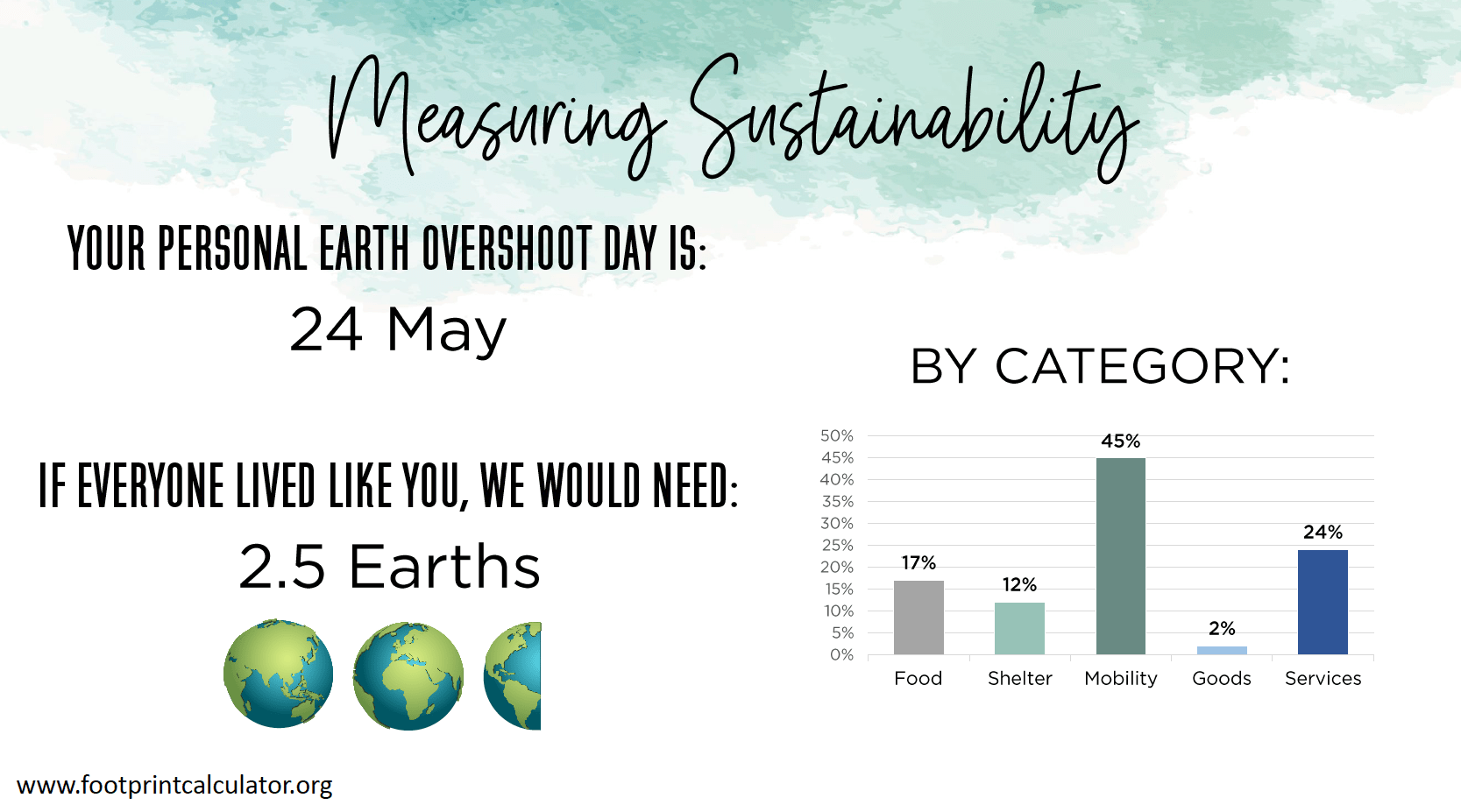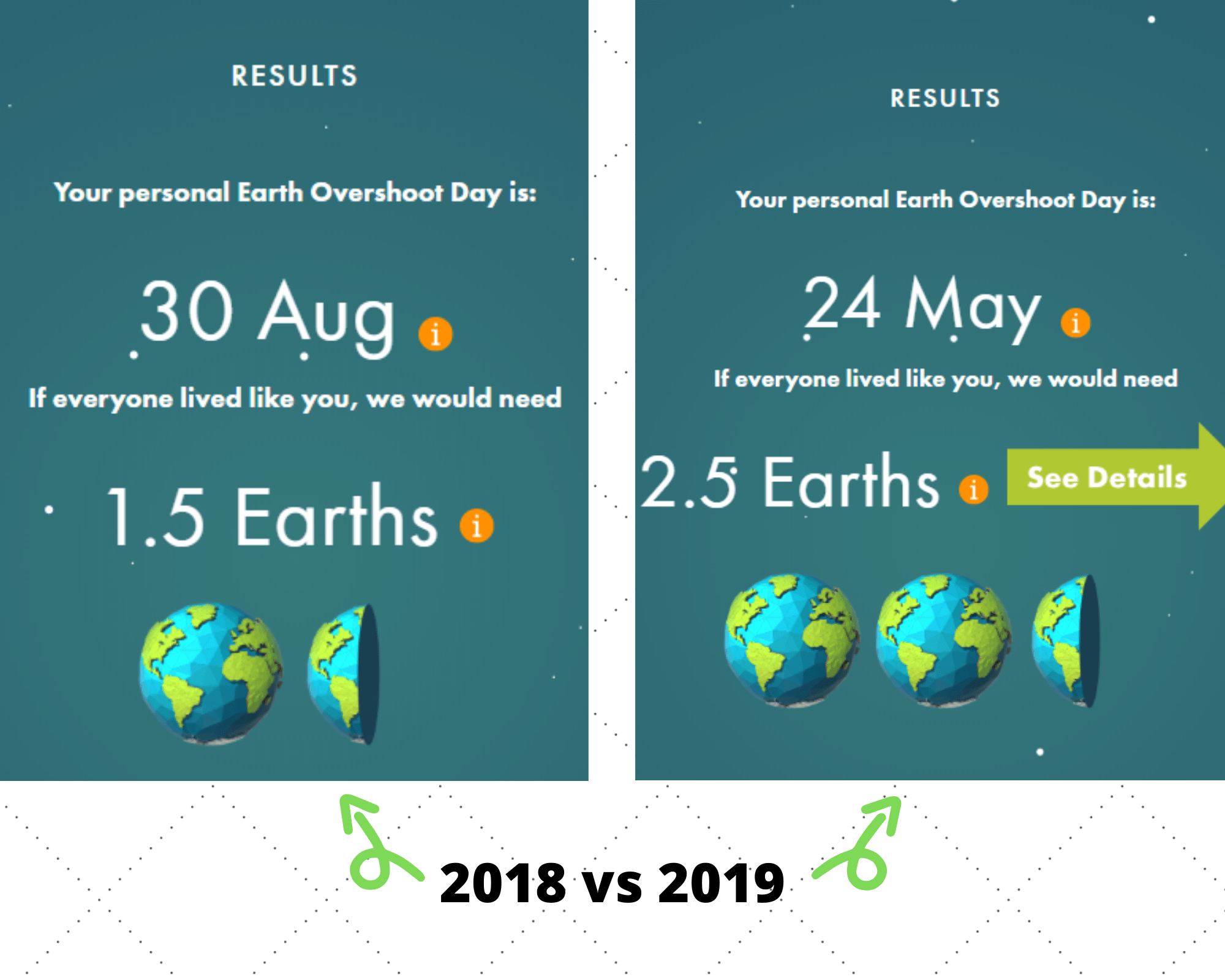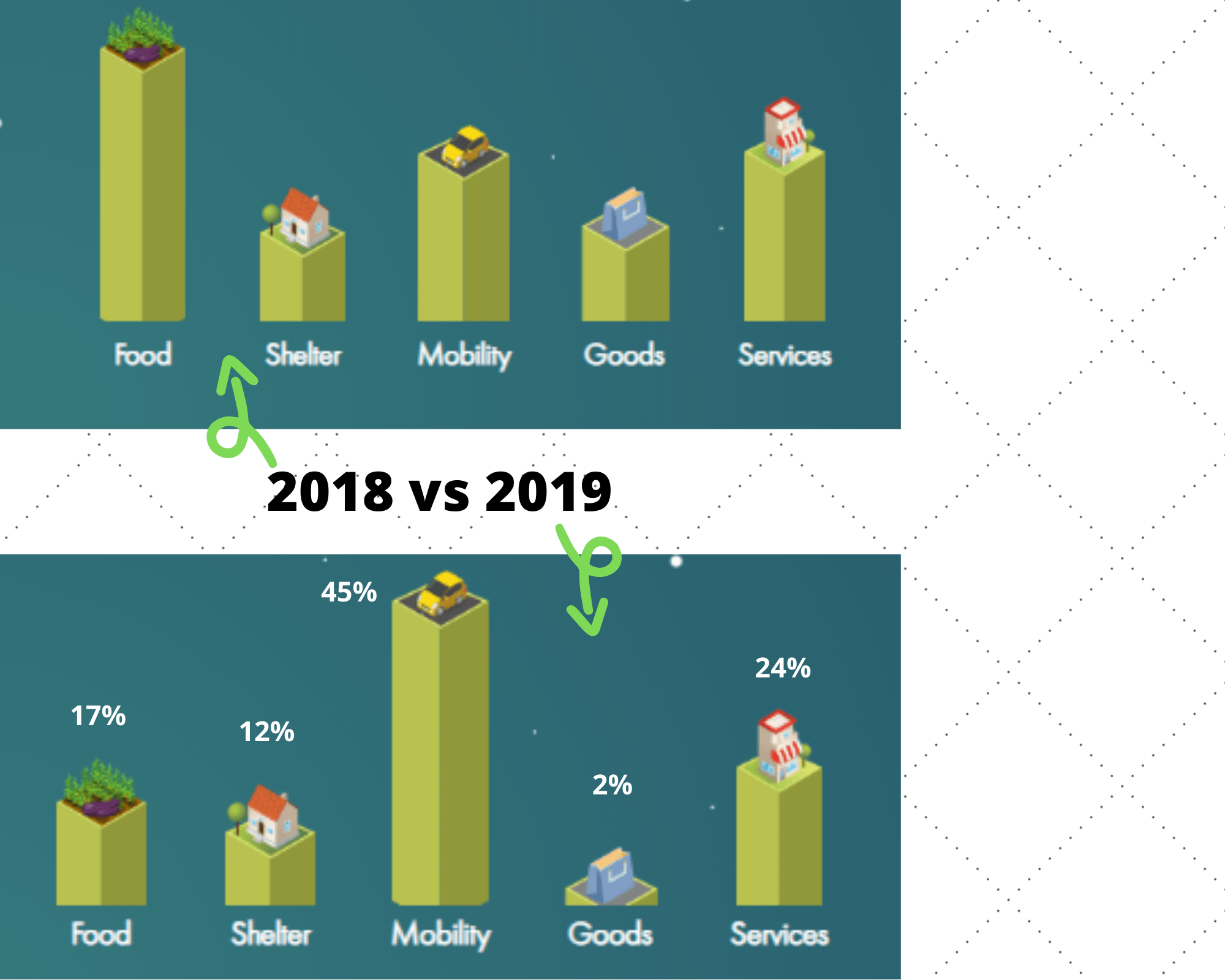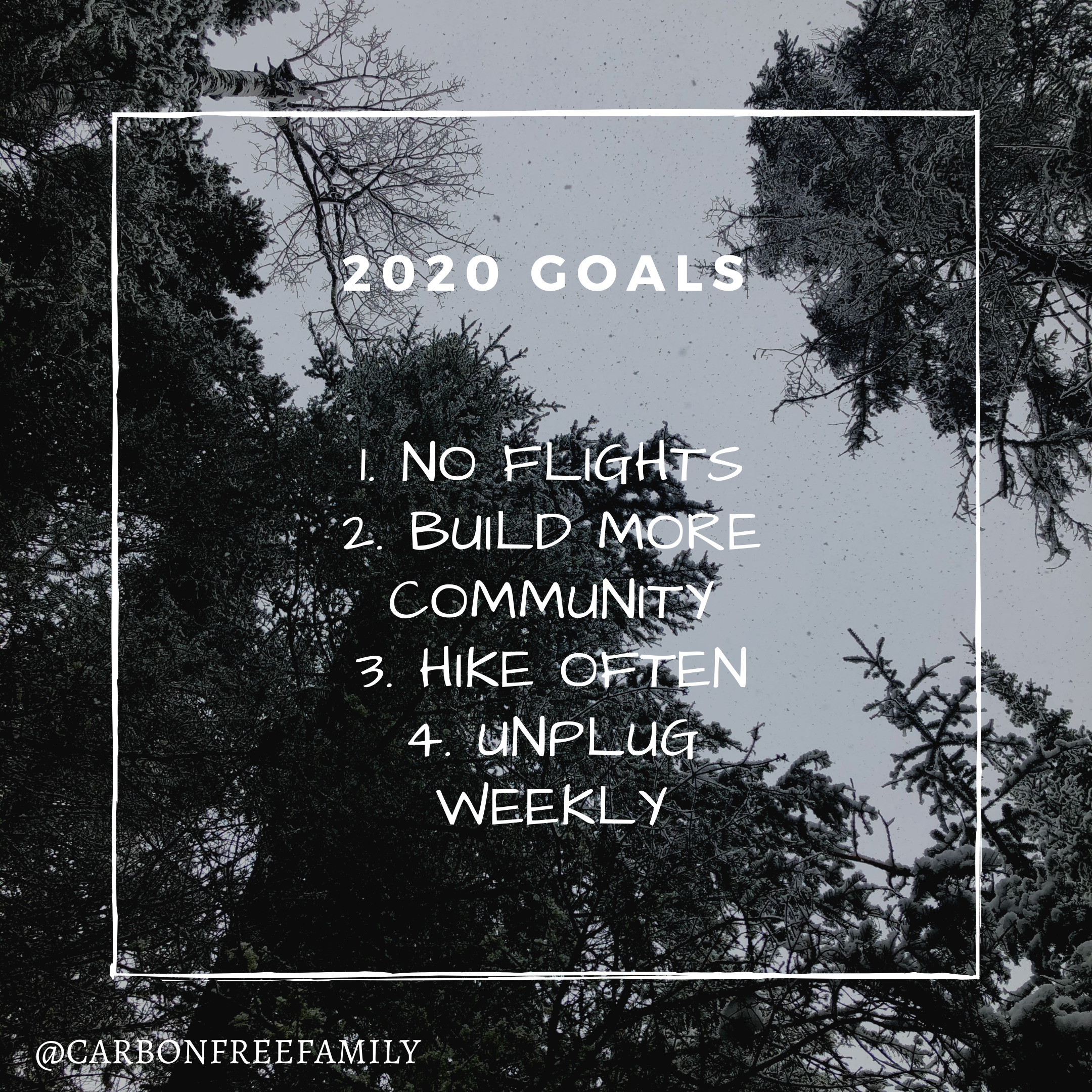Hi! I’m Erin Augustine and welcome to Carbon Free Family — a blog where I’ll share tips and stories about my sustainability progress, failures, and philosophy.
I hope to help you define what sustainability means for you and your family, achieve progress on your journey from exactly where you are, and debunk the “sustainability is hard” myth.
I have a degree in environmental engineering and have honed my skills through my corporate sustainability career in the food and footwear industries. My super power is translating technical concepts, including economics, sustainability, and culture, into simple action plans that can be implemented by anyone. I love finding sustainable solutions that bring joy as well as results.

In 2018, I launched Carbon Free Family to bring business sustainability concepts to individuals and families on their personal sustainability journeys. If you haven’t already, check out our Our Story page for the full story.
As you might imagine, I’m very passionate about sustainability and love to share my passion and learnings with others. I’ve been working toward living a more sustainable life since I was 7 years old and my parents gave me a book called 50 Simple Things Kids Can Do to Save the Earth.
Throughout my journey, I’ve talked with lots of people about sustainability, what it means, and how we can be more mindful of our impacts. A few things stand out for me from these conversations.
- The definition of sustainability is broad. Personal sustainability covers everything from the food we eat, our transportation choices, and the way we heat our homes to the size/type of home we choose to live in and how much/which stuff we buy.
- Sustainability is a journey. There is no perfect. It’s not something we can check off our “to do” list. Wherever you are on your journey is the right place to move forward from. It’s helpful to look around for examples and inspirations, but there is no one-size-fits-all solution for a more sustainable life. Everyone’s path looks different.
- There is a general sentiment that sustainability is hard work. Many people talk to me about how hard it is to go zero waste, live without a car, or eat a vegan diet. While some changes are hard, there are lots of small changes we can {relatively} easily make that, when multiplied by millions of people, will eventually add up to impactful change. I like to think about how living a more sustainable life encourages me to slow down, think about what I value most, and spend the time doing those things well.
Through my blog posts, workshops, and consulting services, I’m here to help you create your personal definition of sustainability, make progress on your journey from exactly where you are, and debunk the “sustainability is hard” myth.
Sustainability is very much meant to be an ongoing conversation, so please let me know if you have specific questions or topics you’re interested in!
Note: The banner photo was taken by the talented James Harnois. Find him at http://www.jamesharnois.com/ and @jamesharnoisphoto on Instagram.
]]>Let’s start with further defining sustainability.
The traditional business definition is the triple bottom line – people, planet, profit – and any good business needs to deliver on all three. I believe these same three values apply to personal life and I apply them in the following ways.
- People – I value my family and my community. I choose to improve my relationships with people, spending more time on adventure and fun with the people I love.
- Planet – I value my planet. I choose to reduce my impact and use fewer resources.
- Profit – I value my money and want to have the financial freedom to enjoy life. I choose to spend less.
I’ve started using an environmental footprint calculator to measure my impacts each year. I recommend this calculator from Global Footprint Network. Here are my results from 2019.

As you can see, my life required 2.5 Earths and an overshoot day of May 24th.
What do these numbers mean? It means that if everyone lived the exact same lifestyle as me, we would need 50% more resources than our Earth can provide. Compare this to the American average of five Earths and I’m feeling good about my progress, but I still have a long way to go to reach my goal of only needing one planet. And overshoot day is the day each year that I begin to use more than my fair share of resources.
 This calculator also tells me my biggest areas of impact. Once I know this, I can make better choices in each area, delivering results for the planet while also improving my quality of life (people and profit).
This calculator also tells me my biggest areas of impact. Once I know this, I can make better choices in each area, delivering results for the planet while also improving my quality of life (people and profit).
This tool helps me define sustainability for my family and provides an annual snapshot of my progress. Remember that sustainability is a journey and no two footprints will look alike. Your footprint today is the perfect place to start from.
If you’re looking to take the next step on your sustainability journey, I recommend calculating your environmental footprint!
During my small group and 1:1 coaching sessions, I’ve developed a list of frequently asked questions that can be challenging or confusing while working your way through the footprint calculator. I’ve created this free course with my tips for easily and accurately calculating your environmental footprint.
At least once a year (usually in January, but it can be anytime) I like to take a few moments to reflect on life and my progress on my sustainability journey. I think there’s huge value in reviewing my actions to make sure they’re a good reflection of my core beliefs and that I’m living the life of my dreams (or at least actively striving for it).
As I mentioned in an earlier blog, I measure my annual environmental footprint (using this calculator) and reflect on my progress. So, here are my results for 2019 vs 2018:

I expected my overall environmental footprint to increase in 2019 because we took three family vacations (with air travel), compared to zero in 2018.
On the other hand, I spent a lot of time in 2019 improving my food choices. I love growing my own vegetables in my backyard garden, shopping at the farmers market and have always purchased local meat (in bulk, like a half a cow and a whole pig). In 2019, I focused on buying more local food during the summer and canning or freezing it so I can eat more local food in the winter too.
I spent a lot of time trying to reduce the amount of packaging I inadvertently purchase with my food. I have reusable shopping bags, yes, but in 2019 I started using reusable produce bags. I also started buying all of my dried goods, such as beans, rice, and nuts, in bulk and brought my own glass jars to the store to use instead of the plastic bags provided.
Lastly, I focused on not buying “stuff” I don’t need or buying it used, instead of new. This “stuff” is categorized as “goods” in the environmental footprint calculator.
Looking for the improvements from all of my hard work in 2019, I dug a little further into the details of my environmental footprint and found a visible decrease in the food and goods categories!

I’m pleased with those reductions, but as expected, my increased air travel for family vacation (three flights from Michigan to California, Texas, and Spain) undo all of the great improvements I made in the food and goods categories. And mobility (AKA transportation) represents nearly half of my environmental footprint.
Which brings me to my 2020 Goals…

I have two big ones that will help improve my 2020 environmental footprint:
- No personal flights
- Spend more time and energy focused on my local community
I’m excited to focus my weekends and vacation time exploring my home state of Michigan and I’ve started a bucket list with my kids of local places we want to explore and activities we want to do. Can you believe I’ve never been to Mackinac Island? And I’ve lived in Michigan nearly my entire life! I’m certain we can have lots of family fun without flying anywhere and I am very much looking forward to proving it. Please share your favorite activities in Michigan (or nearby states) in the comments!
I’m also excited to share my passion for personal sustainability with my local friends, family, and community!
And then COVID-19 hit… and just like all of you, I’ve had to adjust my plans.
On one hand, my goal of no personal flights became a whole lot easier! On the other hand, my big plans for monthly in-person events here in Rockford, Michigan, have been scuttled. I’m adjusting and moving to online events, workshops, and presentations… it’s not the same, but on the upside I get to interact with and bring people together from all over the country, who would not otherwise get to meet.
How are you adjusting your goals after COVID-19?
Do you think your overall environmental footprint will be lower in 2020 due to the changes you’re being forced to make by the pandemic?
What habits are you forming right now that bring more joy into your life and lessen your environmental impacts? And how are you going to keep those habits as you rebuild your “new normal”?
]]>